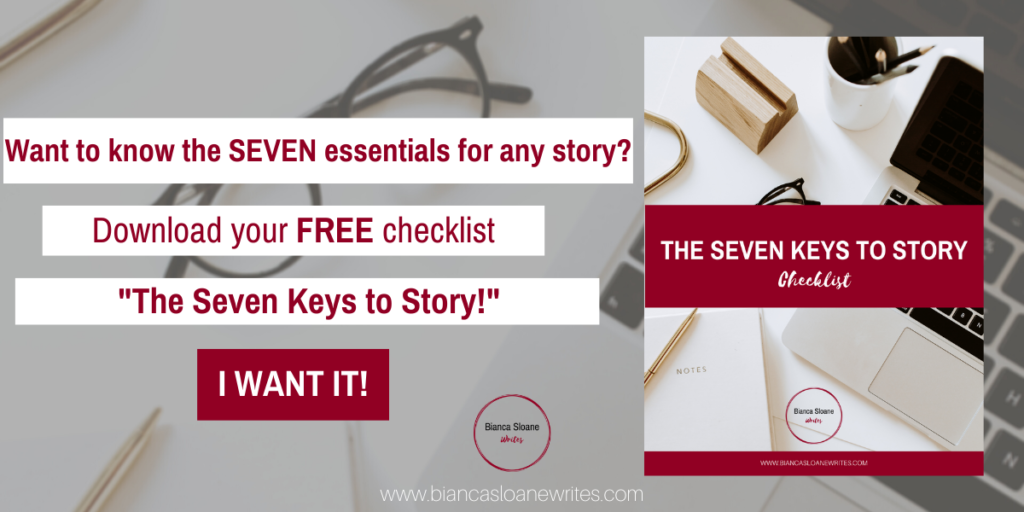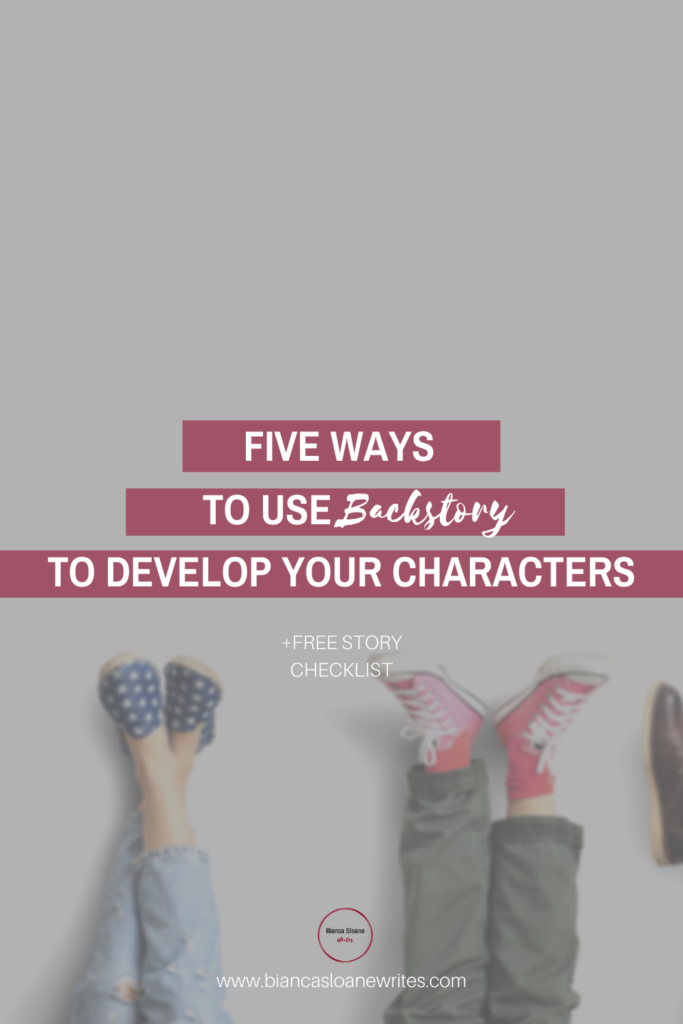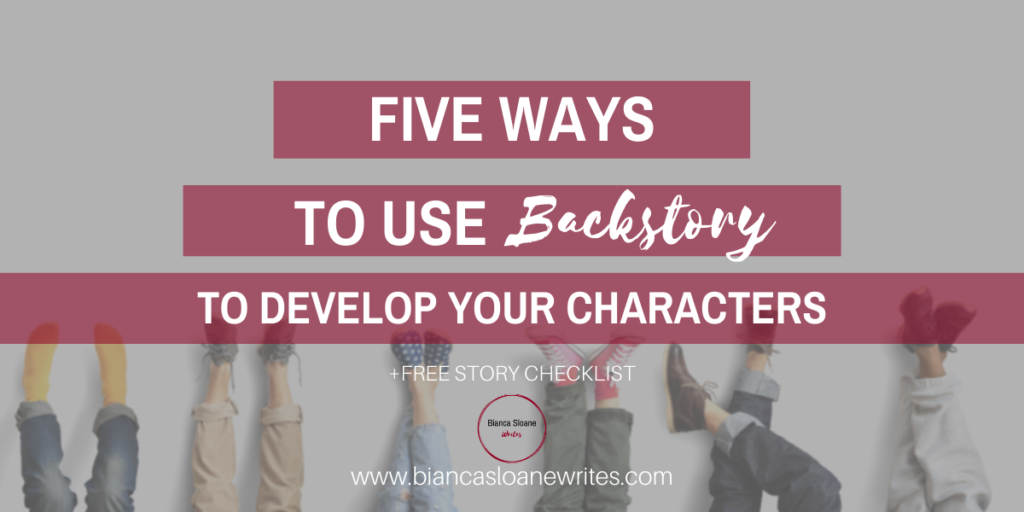Five Ways to Use Backstory to Develop Your Characters
Have you watched Cobra Kai? You should watch Cobra Kai. A sequel of sorts to the original Karate Kid movies, the series continues the stories of Daniel LaRusso (Ralph Macchio) and Johnny Lawrence (William Zabka), the protagonist and antagonist from the original two films.

One of the things that’s so great about it (just one) is the way it taps into and expands the backstories of the characters. Not only does it elevate Daniel and Johnny’s past rivalry, it dives even deeper into how they got where they are now, exploring the complexities of both.

When it comes to developing fictional characters, a backstory provides a goldmine of experiences and emotions that infuses them with multiple layers that will make all the difference between a flat protagonist/antagonist and a three dimensional one. From familial relationships to past romantic entanglements, a backstory is a key element of character development, as it gives us insight into who a character is and why they act the way they do.
Below are five aspects of a character’s background that you can apply toward giving them depth and dimension.
Always give your characters some secrets from their past that play havoc with their present.
1. A Character’s Hometown
Where a person is from can have a profound impact on who they are. A born and bred Brooklynite is bound to be completely different from someone raised on a sheep farm in Australia. Think about ways you can incorporate aspects of where a character hails from into how they interact with those around them and how it shapes them as an individual. What traditions of their hometown or region do they keep with them? How does someone raised in the Southern California sunshine react to the humid swamps of Florida or frigid Iowa? For example, you can use these possibilities to create fish out of water scenarios (Northern Exposure, three of the four DIs on Death in Paradise). Play up those hometown ties with your characters and how they impact them.
2. A Character’s Family Life
Family dynamics are RIFE with all kinds of juicy possibilities. Truly, the possibilities here are infinite. You can explore everything from where your character falls in the birth order among their siblings to relationships with parents, aunts, uncles, grandparents, and cousins.
When we meet Abby Lockhart on ER, she’s self-loathing, self-deprecating, and depressed. It’s not until we meet her bipolar mother, Maggie, do we really understand the core of who Abby is. For example, she took the step of terminating a pregnancy out of fear of passing on the disorder. In “The Slap,” the interconnected dynamics between the sprawling family at the center of the story are complicated and familiar all at once: Aisha’s quietly antagonistic relationship with her overbearing Greek mother-in-law; the strained loyalty her husband, Hector, feels toward his boorish cousin, Harry; the need Hector’s father, Manolis, has to “fix” his family. All of these complex relationships drive the story in interesting ways.
Explore how your character’s family ties molds who they are and dictates their life choices.

3. A Character’s Romantic Past
Understanding a character’s romantic past can be especially important in love stories, but really, it can play a role in almost any genre. In a science fiction story, the bubbling tension of a sticky romantic relationship from the past between the captain and a new recruit can have consequences for the mission. Former spouses in a legal drama who find themselves on the opposite side of a case can lead to conflict.
Is your character divorced, never been married, widowed? Is there a great love that got away from them? Maybe they’ve never been in love. Was the love of their life murdered? Did the love of their life commit a murder? Understanding your character’s romantic past goes beyond whether or not they can move past a broken engagement in order to find love again.
4. A Character’s Professional Past
This is a place where you can have a lot of fun with who your character used to be professionally and how it affects them now. What if your character used to be a cop, but they’re now a doctor? How did they get there? Or maybe they used to be lawyer and now they’re a social worker. What steps led them to that particular vocation? In “The Long Kiss Goodnight,” Samantha Caine is a small town school teacher with no memory of her life before she washed up on a beach eight years earlier. The truth is, she’s a cold-blood assassin named Charlie whose memory starts to come back in bits and pieces. In “The Stranger,” (1946) Charles Wilson is a prep school teacher on the cusp of marrying a Supreme Court Justice’s daughter. Nobody knows he’s a Nazi fugitive.
There are so many intriguing places you can take your character just by getting a fix on their professional past. Have fun with the options.
5. A Character’s Secret Past
Always give your characters some secrets from their past that play havoc with their present. Luka on “ER” is haunted by the death of his wife and children in war-torn Croatia and his inability to save them. As a result, when we meet him, he’s alternately closed off, yet eager to be in a family once again. Over time, this leads to some bad decisions. In “Sleeping with the Enemy,” Laura/Sara’s whole life is one secret after another—from her mother’s death, to her name, to her (in)ability to swim. We’re riveted as her past unravels over and over.
Family dynamics are RIFE with all kinds of juicy possibilities.
What if your character served thirty years in prison? What if after being released, they decided to start fresh by changing their name? But what if someone found out who they are? Then what?

Stuff your protagonist’s (antagonist, too!) past with secrets and lies galore and ask yourself what would happen if they were revealed. Then reveal them. Then keep making things worse 😉
What are some of your favorite ways to use backstory to develop your characters? Sound off below!



